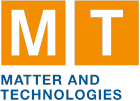Speaker
Mr
Alexander Köhler
(Helmholtz-Zentrum Dresden - Rossendorf)
Description
GeV electron bunches accelerated on a centimeter scale indicate the extraordinary advances of laser-wakefield acceleration (LWFA). High charges together with the femtosecond short bunch duration yield tens of kiloampere peak beam currents which can galvanize the next generation light sources, such as high-field THz, high-brightness x-ray and gamma-sources. However, a specific application requires efficient beam transport and thus high quality beam parameters, such as narrow energy spread and small divergence. The high beam current can modify the accelerating and focusing fields of the accelerator by the phenomenon of beam loading.
We explore the influence of beam loading on electron energy, energy spread and beam divergence and show that beam quality can be maintained at the optimal beam loading. An electron spectrometer records the beam energy and divergence. Betatron radiation is utilized to deduce the betatron source size. Betatron radiation is not only a beam diagnostic but also provides an ultra-fast, high-flux and broadband x-ray source which enables studies on the structure of matter in transient states such as the warm dense matter regime.
Author
Mr
Alexander Köhler
(Helmholtz-Zentrum Dresden - Rossendorf)
Co-authors
Dr
Alexander Debus
(a.debus@hzdr.de)
Dr
Arie Irman
(HZDR)
Jurjen Couperus
(Helmholtz-Zentrum Dresden - Rossendorf)
Dr
Michael Bussmann
(Helmholtz-Zentrum Dresden - Rossendorf)
Mr
Omid Zarini
(Helmholtz-Zentrum Dresden - Rossendorf)
Mr
Richard Pausch
(HZDR)
Susanne Schoebel
(HZDR)
Mr
Thomas Kurz
(HZDR)
Prof.
Ulrich Schramm
(HZDR)
Dr
Yen-Yu Chang
(HZDR)

